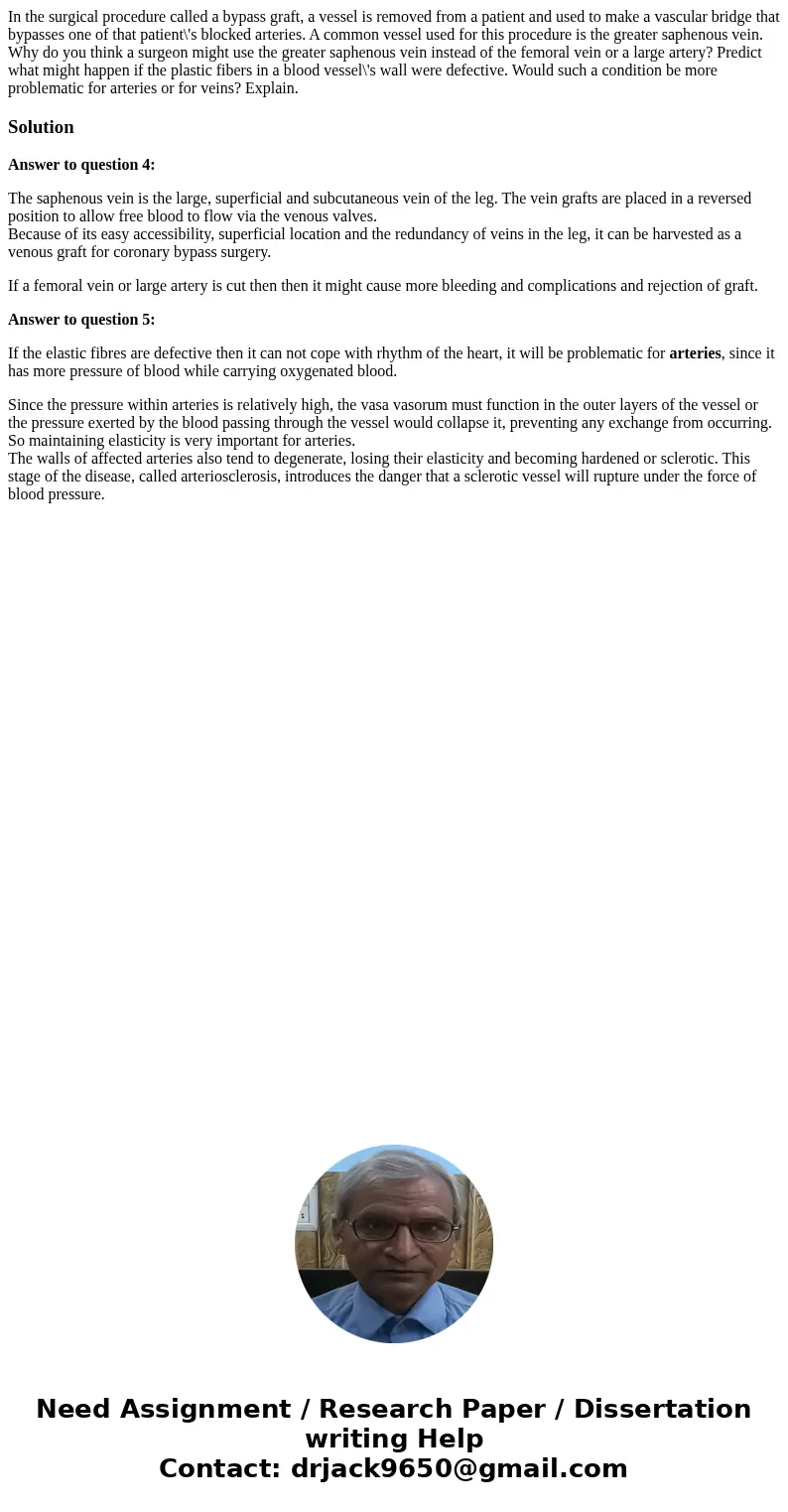In the surgical procedure called a bypass graft a vessel is
Solution
Answer to question 4:
The saphenous vein is the large, superficial and subcutaneous vein of the leg. The vein grafts are placed in a reversed position to allow free blood to flow via the venous valves.
Because of its easy accessibility, superficial location and the redundancy of veins in the leg, it can be harvested as a venous graft for coronary bypass surgery.
If a femoral vein or large artery is cut then then it might cause more bleeding and complications and rejection of graft.
Answer to question 5:
If the elastic fibres are defective then it can not cope with rhythm of the heart, it will be problematic for arteries, since it has more pressure of blood while carrying oxygenated blood.
Since the pressure within arteries is relatively high, the vasa vasorum must function in the outer layers of the vessel or the pressure exerted by the blood passing through the vessel would collapse it, preventing any exchange from occurring. So maintaining elasticity is very important for arteries.
The walls of affected arteries also tend to degenerate, losing their elasticity and becoming hardened or sclerotic. This stage of the disease, called arteriosclerosis, introduces the danger that a sclerotic vessel will rupture under the force of blood pressure.

 Homework Sourse
Homework Sourse